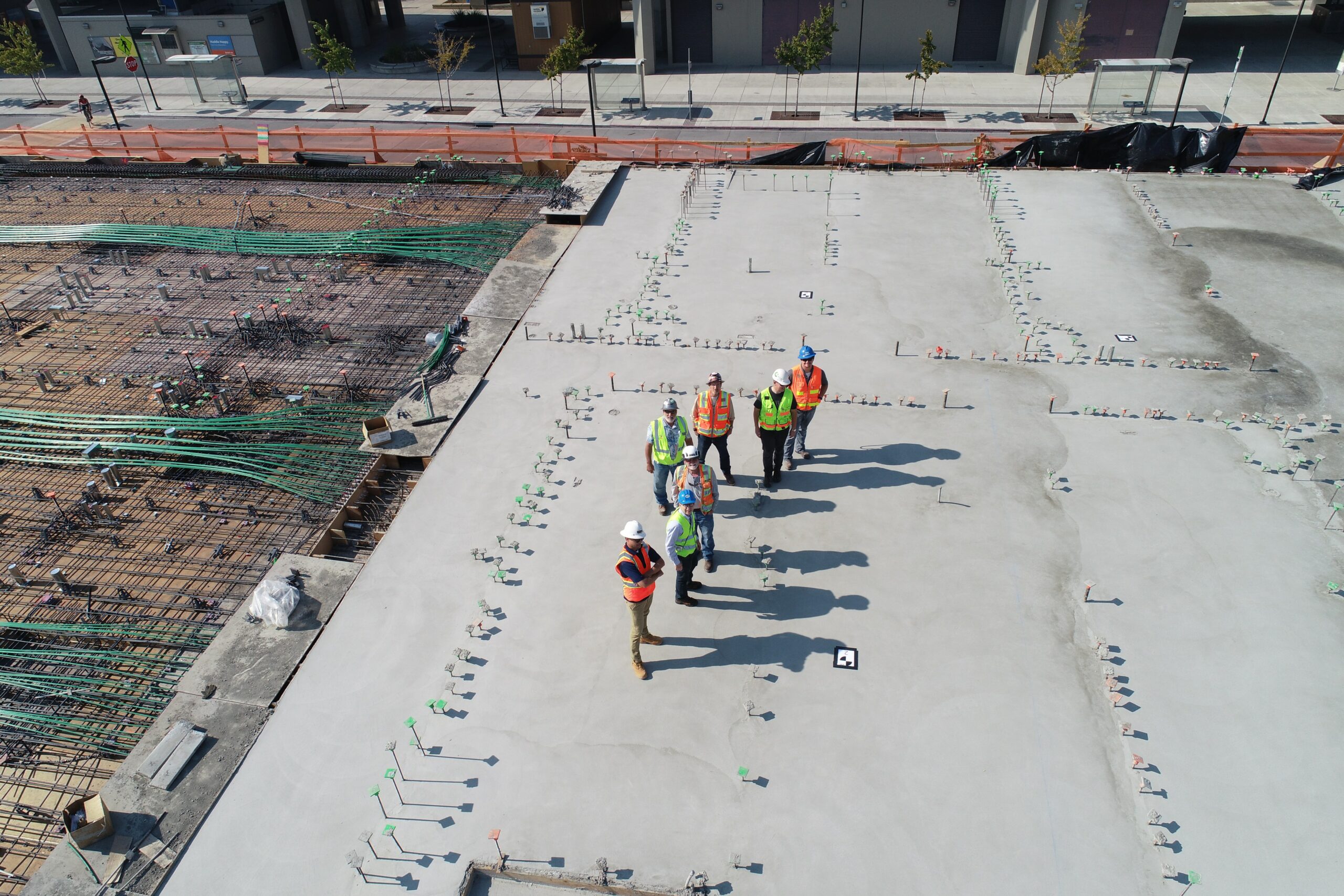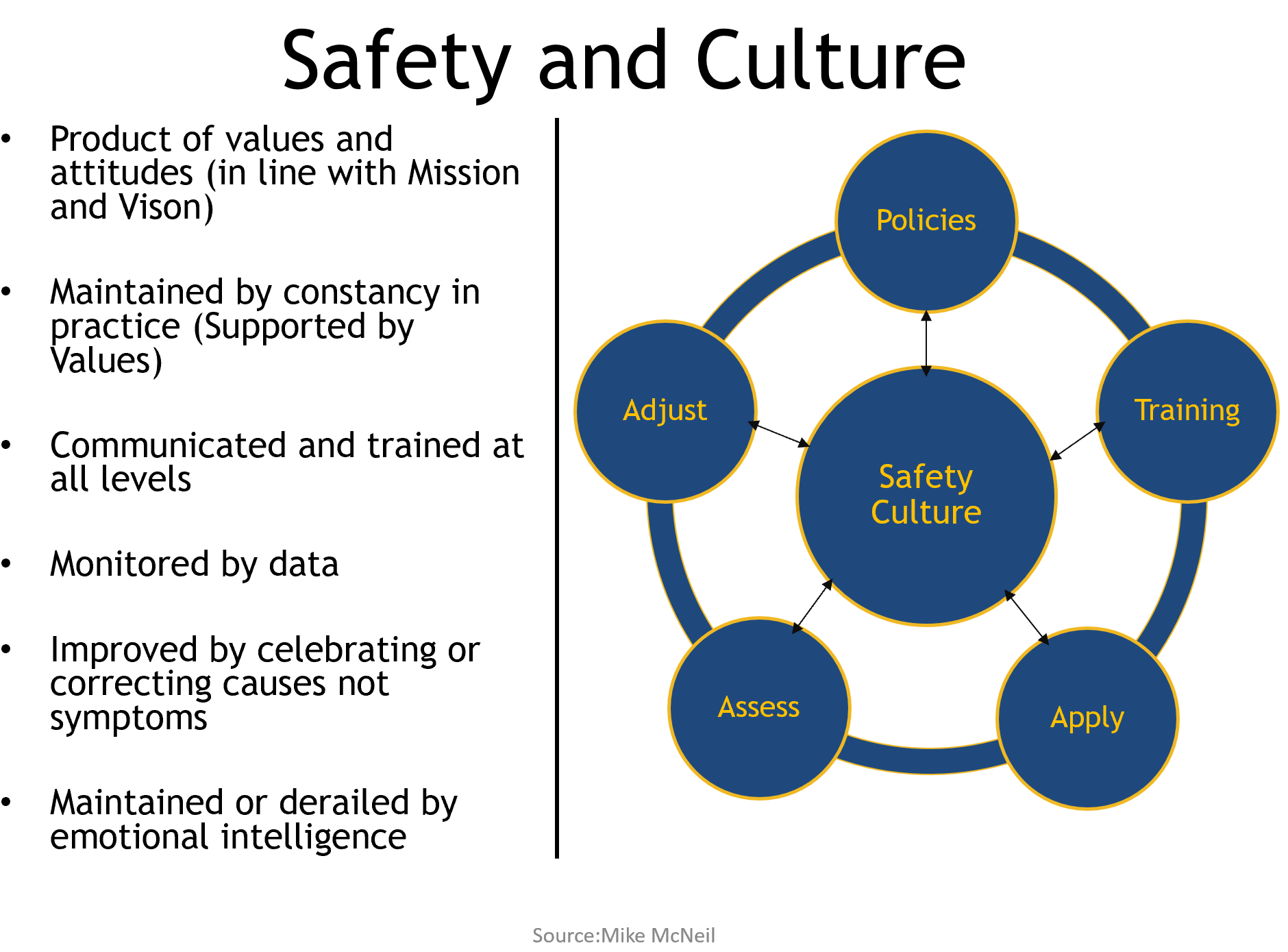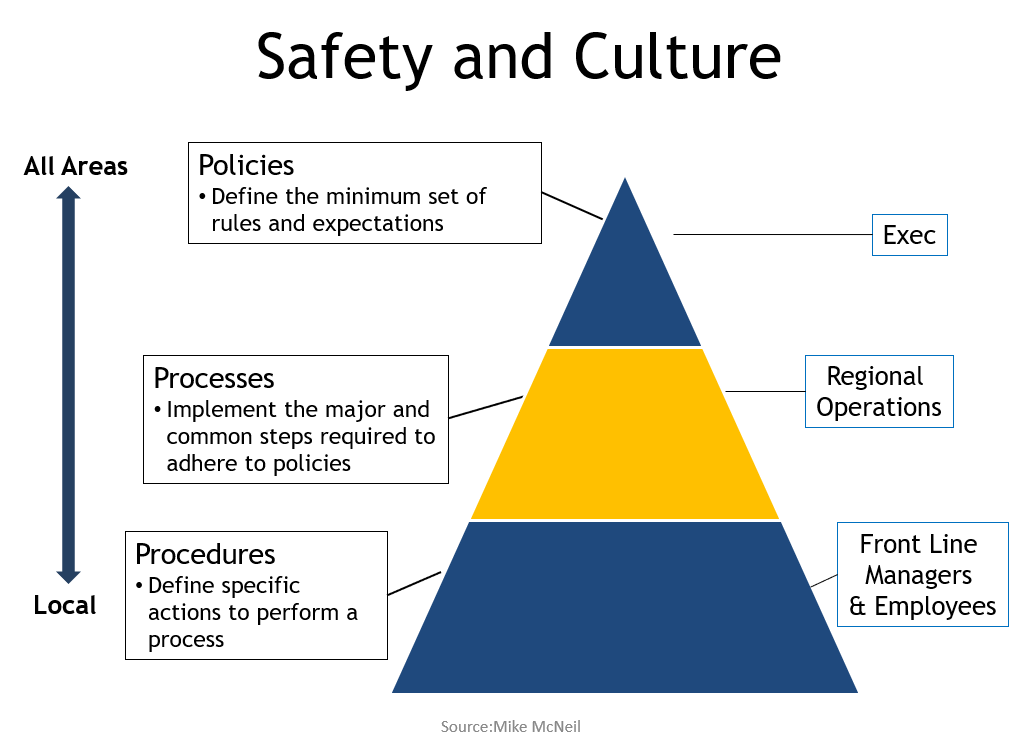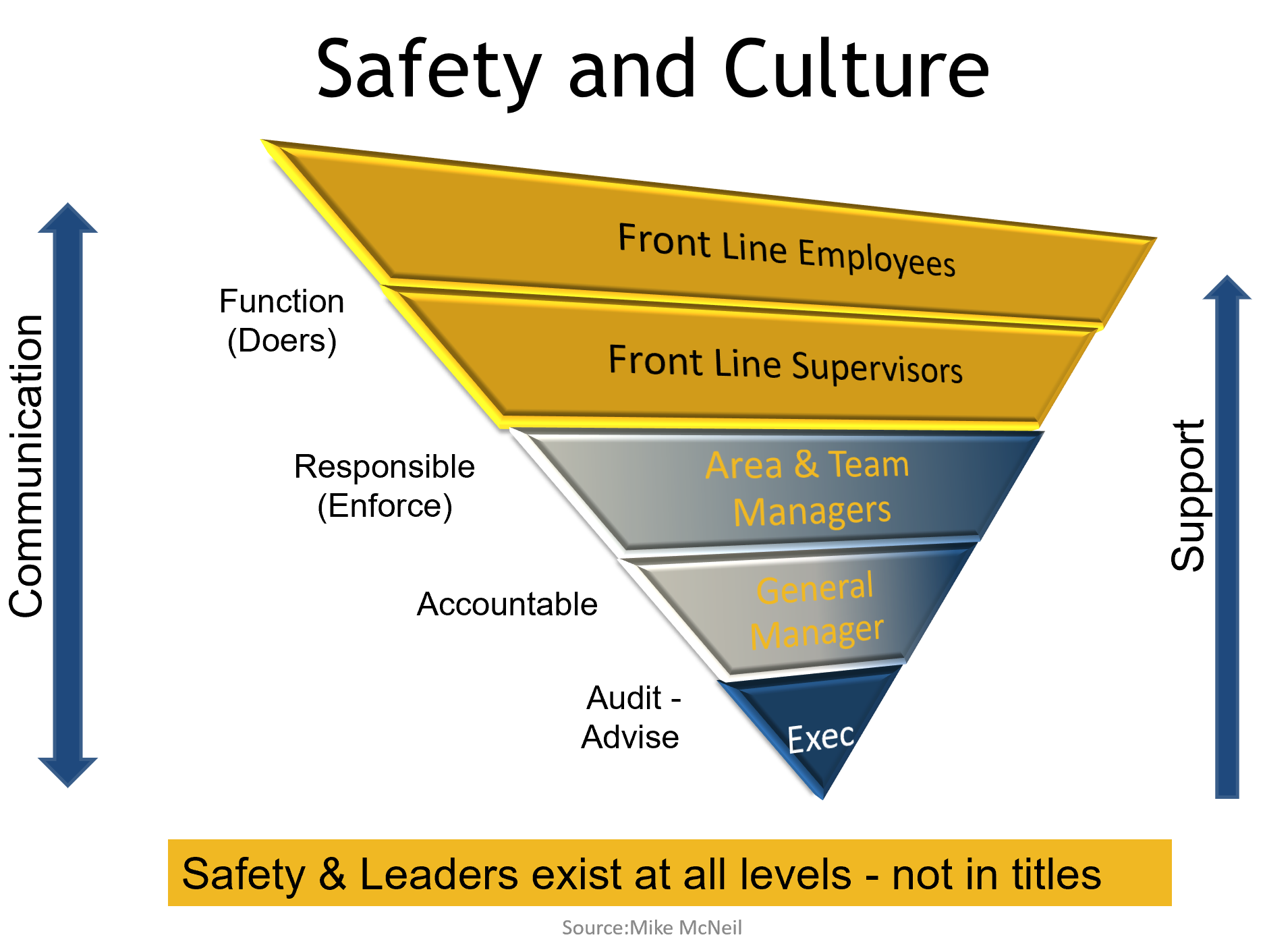
Safety Leadership: Plan Development

To help any organization achieve and sustain their desired safety culture, it is helpful to view it as a cyclic process. To reach the desired levels of safety and culture, the company will need to define the role of safety leadership and how it will be delegated. Additionally, all employees must know and actively participate in their roles.
(Safety and Culture) Roles & Responsibilities
The core of an organization is defined by its structure and connectivity of its team ranging from the executives to the front-line personnel. Each level of the structure must have clearly defined roles and responsibilities whether the organization exists as a single location or with facilities distributed across the country or globe.
Doing the right thing at all levels may prove to be challenging in practice. In previous articles, we showed the structure of programs and how they integrate with the organizational structure. (See diagram below.)
Do the following exist in your organization?
Employees: Be safety leaders, watch out for self and others, stop and correct unsafe actions and conditions, be your colleague’s keeper, ask questions when unsure how to proceed and communicate openly. Note: We all make choices to be active safety leaders or passive witnesses. The time to stop and adjust is prior to an incident or injury occurring.
Line Managers: In addition to the above, set and communicate appropriate expectations, provide instruction (knowledge), answer questions, monitor and interact with employees, praise and adjust accordingly, be a mentor rather than a tormentor by listening and coaching, and resolve issues rather than allowing blame to occur.
Executives: In addition to the above, provide appropriate direction, be true to the cause rather than leading through ego or politics, be dedicated to correcting the root issues rather than chasing symptoms, and lead the organization by serving your teams through empowerment.
Safety Professionals: Take a holistic approach and learn the entire organization including its current and desired culture, communicate openly and consistently at all levels, coach and mentor line management as well as frontline employees, consider servant leadership to influence and support employees and managers.
The diagram below helps to demonstrate the flow of support and communication while safety leadership exists at all levels.






